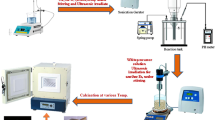Abstract
The development of organic–inorganic hybrids composed of hydroxyapatite and organic polymers is attractive because of their novelty in being materials that show a bone-bonding ability, i.e. bioactivity, and because they have mechanical properties similar to those of natural bone. The biomimetic process has received much attention for fabricating such a hybrid, where bone-like apatite is deposited under ambient conditions on polymer substrates in a simulated body fluid (SBF) having ion concentrations nearly equal to those of human extracellular fluid or related solutions. It has been shown that the carboxyl group is effective for inducing heterogeneous nucleation of apatite in the body. In the present study, apatite deposition on polyamide films containing various numbers of carboxyl groups was investigated in 1.5 SBF, which had ion concentrations 1.5 times those of a normal SBF. The effect of incorporation of calcium chloride on the formation of apatite was examined. Polyamide films containing ≤33 mol % CaCl2 did not form apatite, even after soaking in 1.5 SBF for 7 days, and even when the polymer film contained 50 mol % carboxyl group. On the other hand, those modified with ≥40 mass % CaCl2 formed apatite on their surfaces in 1.5 SBF. The ability of the modified film to form an apatite layer increased, and the adhesion of the apatite layer bonded to the film improved, with increasing carboxyl group content. It is concluded that novel apatite–polyamide hybrids can be prepared by a biomimetic process.
Similar content being viewed by others
References
L. L. Hench, J. Am. Ceram. Soc. 81 (1998) 1705.
T. Kokubo, J. Ceram. Soc. Japan 99 (1991) 965.
H.-M. Kim, ibid. 109 (2001) S49.
J. B. Park and R. S. LakesBiomaterials; An Introduction, 2nd edn (Plenum Press, New York, 1992) p. 194.
M. Tanahashi, T. Yao, T. Kokubo, M. Minoda, T. Miyamoto, T. Nakamura and T. Yamamuro, J. Am. Ceram. Soc. 77 (1994) 2805.
P. Li, C. Ohtsuki, T. Kokubo, K. Nakanishi, N. Soga and K. De Groot, J. Biomed. Mater. Res. 28 (1994) 7.
T. Kokubo, H.-M. Kim, M. Kawashita, H. Takadama, T. Miyazaki, M. Uchida and T. Nakamura, Glastech. Ber. Glass Sci. Tech. 73C1 (2000) 247.
M. Tanahashi and T. Matsuda, J. Biomed. Mater. Res. 34 (1997) 305.
S. Konagaya and M. Tokai, J. Appl. Polym. Sci. 76 (2000) 913.
C. Ohtsuki, T. Kokubo, M. Neo, S. Kotani, T. Yamamuro, T. Nakamura and Y. Bando, Phosphorus Res. Bull. 1 (1991) 191.
C. Weaver, J. Vac. Sci. Tech. 12 (1975) 18.
C. Ohtsuki, H. Kushitani, T. Kokubo, S. Kotani and T. Yamamuro, J. Biomed. Mater. Res. 25 (1991) 1363.
H. Takadama, H.-M. Kim, T. Kokubo and T. Nakamura, Chem. Mater. 13 (2001) 1108.
H. Takadama, H.-M. Kim, T. Kokubo and T. Nakamura, J. Biomed. Mater. Res. 55 (2001) 185.
T. Miyazaki, H.-M. Kim, T. Kokubo, C. Ohtsuki, H. Kato and T. Nakamura, Biomaterials 23 (2002) 827.
Author information
Authors and Affiliations
Corresponding author
Rights and permissions
About this article
Cite this article
Miyazaki, T., Ohtsuki, C., Akioka, Y. et al. Apatite deposition on polyamide films containing carboxyl group in a biomimetic solution. Journal of Materials Science: Materials in Medicine 14, 569–574 (2003). https://doi.org/10.1023/A:1024000821368
Issue Date:
DOI: https://doi.org/10.1023/A:1024000821368




